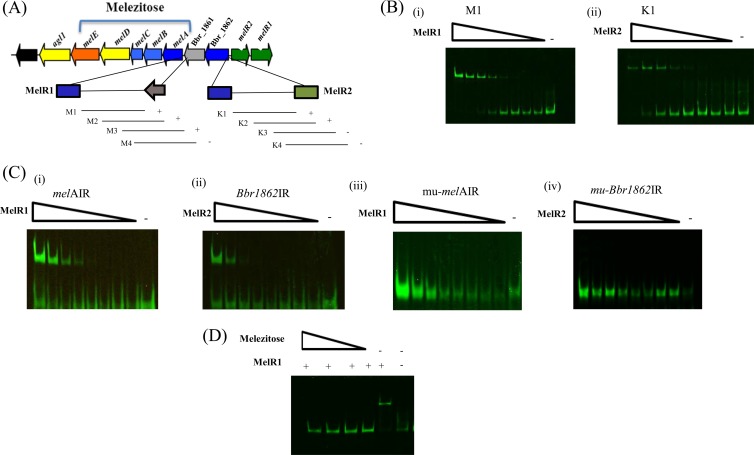FIG 3.
(A) Representation of the melezitose utilization cluster of B. breve UCC2003 and DNA fragments used in EMSAs for the melA and Bbr_1862 promoter regions. The plus and minus signs indicate ability or inability of MelR1 or MelR2 to bind to the melA or Bbr_1862 DNA promoter-encompassing fragments, respectively. (B) EMSAs showing MelR1 interaction with DNA fragments encompassing fragment M1 (i) and MelR2 interaction with DNA fragments encompassing fragment K1 (ii). (C) EMSAs illustrating MelR1 interaction with melAIR (i) and mutated derivative mu-melAIR (ii) and MelR2 interaction with Bbr1862IR (iii) and mutated derivative mu-Bbr1862IR (iv). The minus signs indicate lanes with binding reactions to which no protein was added, while the remaining lanes represent binding reactions with the respective DNA probes incubated with increasing amounts of protein at concentrations ranging from 0.04 nM to 0.01 μM. Each successive lane, from right to left, corresponds to a doubling in the amount of protein used for the EMSA. (D) EMSAs showing MelR1 interaction with the DNA fragment M1 with the addition of melezitose at concentrations ranging from 2.5 to 20 mM.

